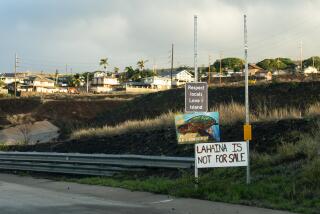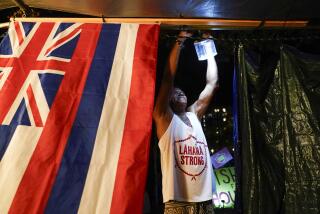Kauai requires you to quarantine, perhaps in a ‘bubble resort’

- Share via
Hawaiian officials are stiffening restrictions on travelers to Kauai, requiring nonessential visitors to the island to quarantine for 14 days, starting Wednesday.
That move, prompted by rising U.S. infection rates, sets Kauai apart from its Hawaiian sister islands, where visitors can avoid quarantine by testing negative for COVID-19 before boarding flights to the islands. (Details vary by island.)
The change comes as several Kauai hotels claim status as “bubble resorts,” also known as “resort bubbles” or “enhanced movement quarantine properties.” Visitors will be allowed to spend their quarantines — or a shorter period — at those resorts, typically with access to swimming pools, resort restaurants and other amenities, but without access to other island sites or businesses beyond resort walls.
According to the program, guests must test negative with a PCR-type COVID-19 test before crossing the Pacific, then take another test after three or four days on the island — and agree to wear an electronic tracking bracelet to make sure they don’t leave their chosen property.
Among the lodgings approved so far as “resort bubbles” are Cliffs at Princeville, Hilton Garden Inn Kauai Wailua Bay, Koa Kea Hotel, Kukuiula and Timbers Kauai.
In announcing the mandatory quarantine, Hawaii Gov. David Ige noted that among Hawaii’s five counties, Kauai has the fewest ICU beds. Kauai Mayor Derek Kawakami, who sought the change, said in a release that the tighter limits on visitors will allow the island community to keep youth sports playing and businesses open “as we conduct surge testing and contact tracing. I will gladly repeal the moratorium once we have the virus under control again.”
Kauai has about 69,000 residents and 4,000 hotel rooms, local tourism officials say. Its case counts are tiny compared with the numbers seen on the mainland and larger islands — officials counted 18 active cases on Nov. 27, with no hospitalizations. But the number of cases doubled in the six weeks after Oct. 15, when Hawaiian officials eased their quarantine requirements and started admitting tourists if they could test negative.
Under the bubble resort program, guests can stay as long or briefly as they like, said Gary Moore, managing director of Timbers Kauai, which includes 47 condos and townhomes on 450 acres. The catch, Moore said, is that the only places visitors can go outside the resort are the hospital and airport.
Still, many guests may like the idea of amenity-laden tropical isolation, Moore said, and the resort’s 165 employees have boosted their cleaning and distancing measures (and added services such as grocery shopping to stock guests’ refrigerators) to provide an extra measure of safety.
Moore said he expects the resort’s occupancy rate to fall in coming days as travelers sort out the new restrictions. But he also expects the average stay (a little longer than five days in 2019) to lengthen as nightly rates, which often start at more than $800, are reduced to about $600 for a two-bedroom unit with kitchen.
.
There is no timetable for the end to Kauai’s new rules, Moore said, but his personal guess is that “this is not going to end any time soon. ... We’re going to be one of the last places to get the vaccine. ... We have to find a way to live with this disease.”
More to Read
Sign up for The Wild
We’ll help you find the best places to hike, bike and run, as well as the perfect silent spots for meditation and yoga.
You may occasionally receive promotional content from the Los Angeles Times.







